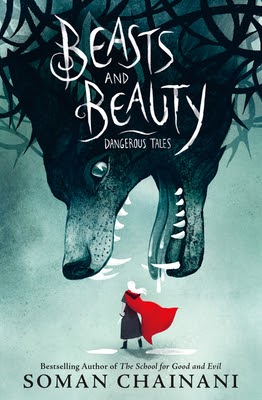Good and Evil in Fairy Tales: Beasts and Beauty

Beasts and Beauty, written by Soman Chainani and illustrated by Julia Iredale, is published by Harper Collins.
We think that growing up means that we have to let go of fairy tales, but what happens when the stories grow up with us?
Fairy tales “aren’t just Western- European canon,” says Soman Chainani, the author of the School For Good and Evil series, “They pop up independently all around the world.”
Over two hundred years ago, the Brothers Grimm compiled some of the most iconic of these folk tales, and, a little under a hundred years ago, Walt Disney adapted these classic but often disturbing stories in his quintessential movies.
Fairy tale retellings have grown in popularity in recent years—from The Lunar Chronicles to Hazel Wood—illustrating we’re not quite ready to let go of these tales as old as time.
In The School for Good and Evil, Soman Chainani not only retells fairy tales but deconstructs them. He finally finished the series after ten long years, only to be stuck in a pandemic. During this isolation, Chainani found solace in his writing.
So he did. This time only to make sense of the new world he found himself in.
Much like A School for Good and Evil, his new book attempts to turn fairy tales upside down.
Beasts and Beauty is divided into twelve retellings of classic fables. The stories can be dark—the beasts, and even occasionally the heroes, will resort to violence—but so were the original Grimm fairy tales. Despite the darkness, every story is illuminated with the whimsical illustrations of Julia Iredale and Chainani’s magical prose.
Chainani creates a world of dichotomies, one where you can either be a beauty or a beast. The two are always in orbit of each other. “What is a witch but a princess who no longer needs a prince?” he writes. However, in the end, beasts are still beastly and beauties are still beautiful.
Through the world of fairy tales, Chainani reveals the struggles of our own. Chainani’s Snow White addresses racism and discrimination while his Sleeping Beauty discusses homophobia. These contemporary issues update the stories for a new generation. We no longer have to run from wolves, but we face new beasts.
Beasts and Beauty is haunted by the sneaking suspicion that we know how this will end. Nonetheless, it is a beautiful journey back through the lush and vicious world of fairy tales. Some day we will all be old enough to read fairy tales again. In the meantime, it is the fairy tales that have grown—and will keep growing with our changing world.
